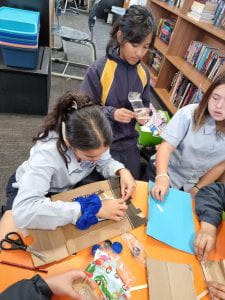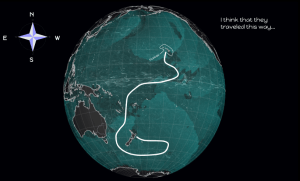Greetings today we are finishing our waka. A type of Maori boat that they used to travel across the oceans and seas to find land. A waka is a type of boat with a cool design. Our design was to use water bottles as the bottom. Wooden sticks in the middle. Paper under the seatings is a kind of food storage and water storage. Use wooden popsicle sticks as seating for the waka. This is what we tried to make our waka look like down below:

We also stuck some wooden sticks on they kind of looked like toothbrushes. I think that it will float if we put a lot of effort into our waka. Tomorrow in period 5 we will be floating our waka into the water, To see whoever wins. This took us about 2 weeks to finish. Credits to the people in my group Addison, Peyton, Diviya, Aria , Annemieke and Yance. Here are the results thank you!!





